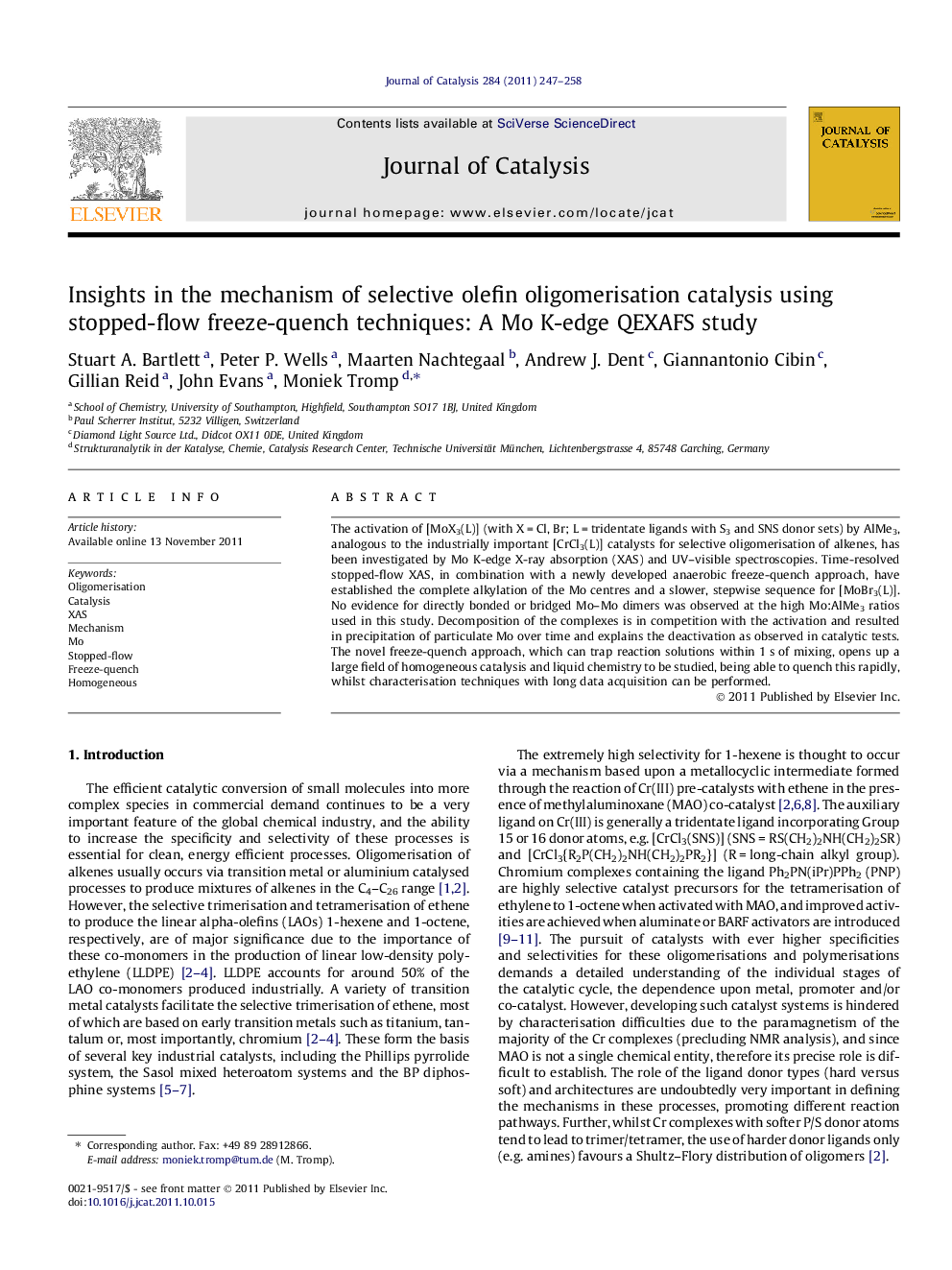| Article ID | Journal | Published Year | Pages | File Type |
|---|---|---|---|---|
| 61568 | Journal of Catalysis | 2011 | 12 Pages |
The activation of [MoX3(L)] (with X = Cl, Br; L = tridentate ligands with S3 and SNS donor sets) by AlMe3, analogous to the industrially important [CrCl3(L)] catalysts for selective oligomerisation of alkenes, has been investigated by Mo K-edge X-ray absorption (XAS) and UV–visible spectroscopies. Time-resolved stopped-flow XAS, in combination with a newly developed anaerobic freeze-quench approach, have established the complete alkylation of the Mo centres and a slower, stepwise sequence for [MoBr3(L)]. No evidence for directly bonded or bridged Mo–Mo dimers was observed at the high Mo:AlMe3 ratios used in this study. Decomposition of the complexes is in competition with the activation and resulted in precipitation of particulate Mo over time and explains the deactivation as observed in catalytic tests. The novel freeze-quench approach, which can trap reaction solutions within 1 s of mixing, opens up a large field of homogeneous catalysis and liquid chemistry to be studied, being able to quench this rapidly, whilst characterisation techniques with long data acquisition can be performed.
Graphical abstractTime-resolved stopped-flow XAS in combination with a novel freeze-quench approach have established the stepwise alkylation of [MoX3(L)] complexes, analogous to the industrial [CrX3(L)] complexes for selective alkene oligomerisation reactions.Figure optionsDownload full-size imageDownload high-quality image (84 K)Download as PowerPoint slideHighlights► Investigate activation of homogeneous catalysts for selective oligomerisation. ► Time-resolved and newly developed freeze-quench stopped-flow XAS studies. ► Stepwise displacement of halide observed, forming [Mo(CH3)3(L)], without Mo dimers. ► Reaction kinetics depending on metal and halide. ► Decomposition of activated species to Mo precipitate.
